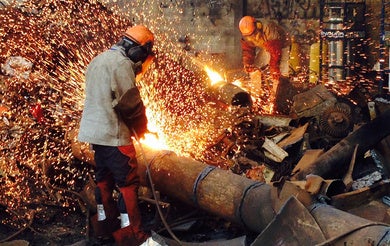Blogs Navigation
Sustainable BusinessRecent posts

Financial Health: Driving Growth in Latin America and the Caribbean
According to the latest Global Findex database, the proportion of adults in Latin America and the Caribbean (LAC) with account ownership rose from 39% in 2011 to over 75% in 2025. This increase was driven by the rise of digital-first financial service providers, expanded government transfers, and innovations that enhance the value proposition, such as the growth of e-commerce and instant payment systems in countries like Brazil, Peru, and Costa Rica.

IDB Invest and the New Push for the Private Sector in Paraguay
Imagine investing in a portfolio of projects in a country with sustained economic growth, low inflation, abundant clean energy, and preferential access to a regional market of 270 million consumers. That country is Paraguay, where IDB Invest has committed to mobilizing up to $1 billion to support strategic private-sector projects that drive sustainable development.

Energy and Transport Infrastructure: Projects Driving Jobs and Transforming Communities
IDB Invest works to boost job creation through the private sector and ensure these opportunities reach areas with the potential to develop new productive sectors and generate formal employment. Financing energy and transport infrastructure projects in Latin America and the Caribbean has been crucial for creating quality jobs and increasing women's workforce participation.

Why does the private sector need capital markets?
Across emerging markets, access to finance is one of the largest barriers to success for private enterprises. Business leaders cite scarcity of credit as their main concern for growth, outweighing issues like corruption, tax and political instability.

How cattle ranchers can profit from planting trees
In agriculture it’s not often that you find a relatively simple way to increase production by up to 20%. Planting trees turns out to be one such way for cattle farmers. Cows like shade and grow much faster if they graze on pastures dotted with trees. Studies show that combining livestock herding and forestry on the same stretch of land can lead to an 8% to 20% increase in dairy and meat production in the Southern Cone region.

Three ways to strengthen financing for private companies in the Caribbean
Growing up in The Bahamas, I remember my grandmother’s asue. There weren’t any banks where she lived on the island of Inagua, and even if there had been, it wasn’t customary for women to frequent them. To adapt, women (and sometimes men) formed their own informal savings groups, known as asues. As her group’s custodian, my grandmother collected a weekly contribution from participants who would then withdraw money on special occasions to cover school fees or larger purchases.

The region is evolving. So are we.
We are witnessing the Fourth Industrial Revolution, the theme at this year’s World Economic Forum in Davos. It represents the digital revolution, the rise of the collaborative economy and growth expectations that are exponential instead of linear. The economic transformations emerging from this revolution remind us that the business models of yesterday cannot build the business of tomorrow. It reminds us how quickly the world is evolving and how quickly the Latin American and Caribbean region is following this trend.

How airports are making traveling more sustainable
By Christian Mirabella In 2015, almost 39 million people traveled through São Paulo-Guarulhos International Airport. Located in Brazil’s southeast, Guarulhos is not only the largest hub in the country, but in the entire region. The amount of passengers transiting here follows an important global trend: air travel is continuing its dizzying rise. Only five years earlier, Guarulhos had recorded a mere 27 million passengers.

Why steel companies are hiring more women
If the entire private sector of Latin America and the Caribbean was one giant company, six out of ten of its employees would be men. And while you could find a somewhat larger number of women in some parts of that company such as Finance, Legal and Human Resources, other areas would almost entirely be made up of men.


